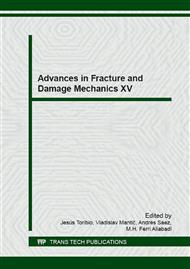p.127
p.131
p.135
p.139
p.143
p.147
p.151
p.155
p.159
Incorporation of a Fracture Criterion in Ideal Flow Design
Abstract:
The theory of sheet and bulk ideal plastic flows is used for the preliminary design of metal forming processes. The present paper develops an approach to incorporate the Cockroft and Latham ductile fracture criterion in this design method for stationary bulk flows. In particular, it is demonstrated that the initiation of ductile fracture can be predicted without having the ideal flow solution for stress and strain in the plastic zone (it is only necessary to know that the solution exists). Using the approach proposed the initiation of ductile fracture in axisymmetric drawing is predicted.
Info:
Periodical:
Pages:
143-146
Citation:
Online since:
September 2016
Authors:
Keywords:
Price:
Сopyright:
© 2016 Trans Tech Publications Ltd. All Rights Reserved
Share:
Citation:


